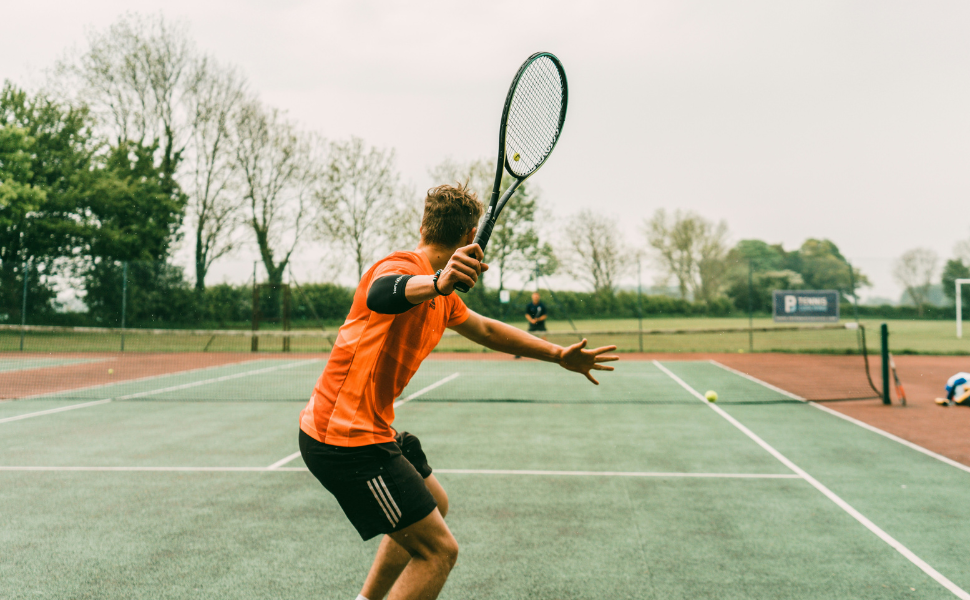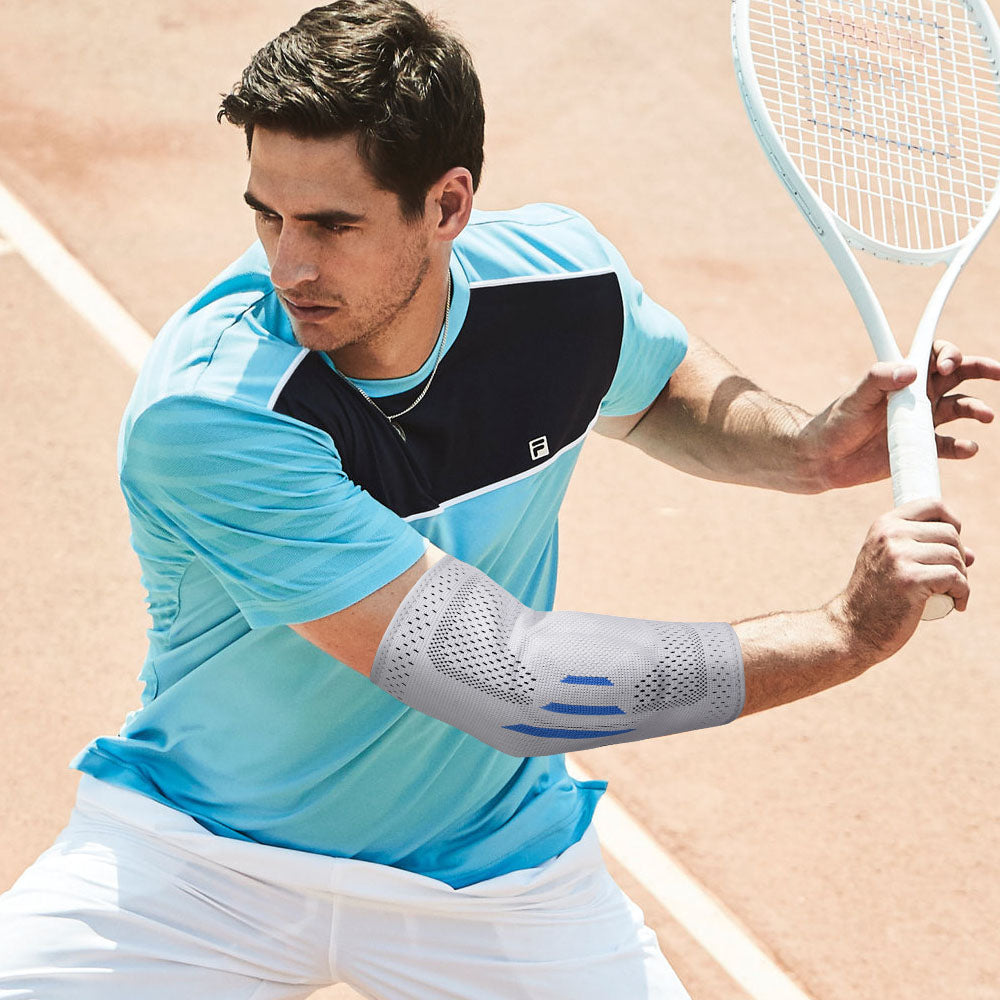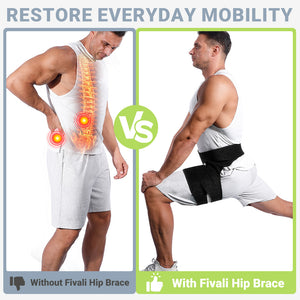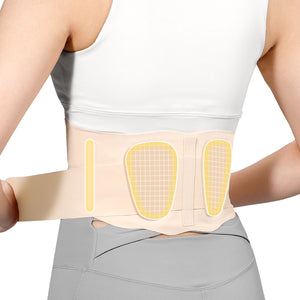Hyperextended Elbows: Causes, Symptoms, Treatments, and Preventions

Our elbow joints face daily stresses that can push them too far. From vigorous sports like football to catching our fall with outstretched arms, these joints undergo ample force. An unwelcome possibility is hyperextended elbows– where a bend surpasses intended flexibility to an unhealthy degree.
When significant impacts or twists are absorbed suddenly by the arm, undue torsion can overstretch elbow ligaments and tendons, holding bones in safe alignment. A hyperextension results, recognizable from pain and swelling up to mobility loss.

What Causes a Hyperextended Elbow?
Our elbow joints rely on delicate anatomical structures to permit the full range of flexion and extension motions our arms require. Our elbows are composed of three joining bones. Chief among them is the humeroulnar joint connecting the humerus and ulna, allowing the arm to straighten and bend at the elbow. This injury occurs when elbow alignment faces undue stress that interrupts its natural functioning. On a basic level, hyperextended elbows happen when the joint bends too far backward past typical limits.
Daily activities like sports provide the second potential cause. Vigorous movements involved in football, martial arts, or weightlifting present risks if the arm over-rotates on impact or under tension. Similarly, trying to catch a fall by reflexively thrusting hands downwards transfers full body weight to the elbow in an unprotected position. Without warmed muscles or protective equipment, our built-in protections fail more easily.
Symptoms of Hyperextended Elbow
The elbow joint is put under intense strain during an elbow hyperextension injury. Hyperextended elbow symptoms can vary from mild to severe depending on how far the joint is stretched beyond its normal range. Common symptoms of hyperextended elbow to look out for include:
-
Swelling
Swelling around the elbow as inflammation builds in response to damaged tissues like ligaments and muscles, making the joint appear puffy, warm, and tender to the touch.
-
Stiffness
There is stiffness in the joint when trying to extend or flex the arm at the elbow, as the injury causes discomfort and reduced mobility in the full range of motion. Even simple tasks like bringing a hand to the mouth become difficult.
-
Muscle spasms
Muscle spasms, particularly in the bicep muscle group above the elbow, may result from excessive bending, which may have strained or partially torn bicep fibers, leading to involuntary contractions of the muscle.
-
Weakness
Loss of strength when opening jar lids or carrying bags, as the injury weakens the joint structurally, and it is unable to support the same weight loads until fully recovered.
-
Numbness
Numbness that radiates down the arm and into the hand, a result of compressed nerves in the elbow swelling putting pressure on nerve pathways.
-
Redness, discoloration, and blotchy skin
Discolored, blotchy skin around the hyperextended elbows due to internal bleeding or fluid buildup beneath the surface, presenting as reddish-purple shading on the skin over the injured area.
-
Elbow deformation
Elbow deformation with a visible misalignment or odd angle of the joint, signaling potential fractures or torn ligament remnants protruding beneath the skin following high-force impacts.
-
Pain
Sharp, stabbing pain activated by any joint movement as irritated tissues are aggravated or dull, aching pain that lingers even at rest between flexions.
-
Loss of strength (elbow and arm)
Inability to grip or carry without noticeable weakness, as stabilizer muscles waste without use and the joint loses functional strength.
The severity of hyperextended elbow symptoms provides clues about the potential damage sustained and the length of recovery needed. Seeking early treatment aids in limiting long-term issues.
Treatments for Hyperextended Elbow
The appropriate treatment plans depend on the severity assessed by a medical professional. Go-to remedies include rest, icing, bracing, and physical therapy routines. Hyperextended elbow treatment options for different levels of injury may include:
1. RICE Method
The primary RICE method (rest, ice, compression, elevation) jumpstarts the healing of minor injuries. Rest from straining activities, ice application, compression with an elastic bandage, and elevation diminish discomfort from onset. Applying ice for a few minutes multiple times per day helps reduce pain and swelling the most.
2. Physical Therapy Exercises
Once pain subsides, physical therapy commences with guided exercises. Stretches and light resistance movements prepare the joint for a full comeback without straining partially mended tissues. Exercises gradually progress over weeks to restore full mobility and muscle function.
3. Anti-Inflammatory Medicine
Over-the-counter pain relievers help soothe pain and reduce swelling linked to mild-moderate hyperextended elbows. Taking the medication allows for more comfort during the initial rest stages. Anti-inflammatories should be taken as directed by your doctor and on the package labeling.
4. Elbow Brace
Sprains warrant short-term bracing to keep the elbow still. Quality products like the Fivali elbow braces suitably support inflammation recovery. Progressing to lighter bracing lets the joint gently strengthen while protecting it from accidental bumps or impacts.
5. Surgery
For the most severe injuries involving fractures or fully torn ligaments, surgery may be necessary. An operation repairs damaged areas to restore joint integrity. Weeks of post-surgical immobilization allow healing. Follow-up physical therapy for hyperextended elbow regains lost mobility through graduated movements and muscle-building exercises.
Prevention of Hyperextended Elbow
Maintaining awareness during daily activity proves vital to avoiding hyperextended elbows from the start. Certain precautions effectively reduce risks over both short and long term:
-
Mindful Movements
Be aware of proper joint alignment when lifting weights or doing yoga poses. Avoid jerky motions that over-push limits. Controlled movements in both speed and range conserve elbow integrity. Pay attention to form to ensure movements don’t stress the joint beyond its means.
-
Posture Protection
During falls, keep elbows tucked close to the body rather than flung out. Maintain upright carriage to offset stresses otherwise transmitted to vulnerable joints. Keeping arms framed around the torso limits how far they can bend backward on impact.
-
Pace Guidance
Gradually building up reps and weights prevents shocks to the body system. Know personal limits and respect them religiously to sidestep inflammation triggers. Don’t increase workload too fast to allow tendons time to adjust.
-
Gear Safeguarding
For sports like tennis or strenuous workouts, safe solutions like the Fivali elbow brace products brace joints against surprise twists. With breathable neoprene securing the natural function, prevention need not inhibit performance. A quality hyperextended elbow brace provides valuable peace of mind so that you can enjoy activities freely.
-
Recurrence Caution
Those with a history of subluxations must religiously follow prevention practices. Repeated microtrauma accelerates deterioration, so brace up for high-risk tasks to avoid cycle continuation. Prior injuries necessitate added precautions long-term.

Hyperextended elbows result when the elbow bends farther than its normal limits, causing strains on surrounding ligaments. Catching falls with hands outstretched or forceful sports collisions are common culprits. Symptoms involve pain and mobility limitations. Resting the joint and icing inflammatory responses represent first-line home treatments. For serious cases, doctors may prescribe rehab routines or immobilization braces. Employing prevention tactics like controlled movements and arm protection gear, e.g., elbow brace, etc., should be active and habitual in our daily workouts and sporting events to protect our joints long-term.













